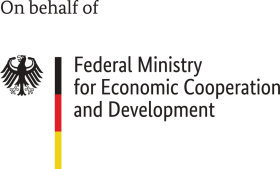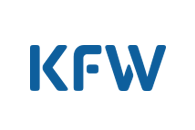Solar-cooled milk boosts income

The challenge
The Zimba district is located in the far south of the country, bordering Zimbabwe. Most people rely on farming and livestock, with milk production playing a major role. However, small farmers generally live up to 30 kilometers from the nearest milk collection point and up to 160 kilometers from the nearest dairy. As dairies need electricity for the refrigeration of milk, most have settled in electrified cities. Because of the long distances, many farmers can therefore only market their milk locally and about 60% of the milk spoils before it can be sold. As a result, smallholder farmers are earning significantly less income, even though the demand for milk in Zambia is increasing.
The goal
This is where the solar milk cooling project comes in. The idea is that by using solar-cooled milk containers, dairy cooperatives can collect milk from smallholders, cool it, market it and generate higher incomes for their members, even in areas that are cut off from the power grid. This is expected to particularly benefit members of milk cooperatives in Mayoba and Muzya, which operate 25 kilometers outside the district capital of Zimba. Before the project started, farmers only delivered their milk in the morning because of the distances involved. They had to sell the evening milk to neighbors, consume it themselves or throw it away. Thanks to the cooling system, they can now market all of their milk. Furthermore, the project hopes for a technology transfer through training for local technicians as well as additional income opportunities for members of the cooperatives through the professional storage of milk.
Our partners
The Solar Milk Cooling Project operates as a subsidiary of the Zambian Ministry of Agriculture. The ministry maintains its own offices in the provinces and districts. At the district level, the local staff interact with small farmers and cooperatives and communicate new technologies and methods in organized meetings and training sessions.
The approach
The project will unfold in three phases. In the first phase, a feasibility study will show whether the concept meets a real need for milk collection centers in Zimba and what a working implementation model might look like. How will the deliveries be recorded? What is the income generated by them? And what are the running costs incurred that will be shared among members? In the second phase, the equipment for two out of four of these collection points will be supplied from Germany, and two more will then be manufactured locally using local materials. In the third phase, the equipment will be tested during operation and adjusted if necessary. In parallel, the project’s creators are planning various training courses likeone on animal husbandry and hygienic milk processing. The project also aims to train local technicians in the handling and maintenance of the equipment. Selected members of the cooperatives will also receive basic training on the same topics.
Zimba District
Solar cooling
Members of milk cooperatives in Zambia
02/2021 – 05/2023



